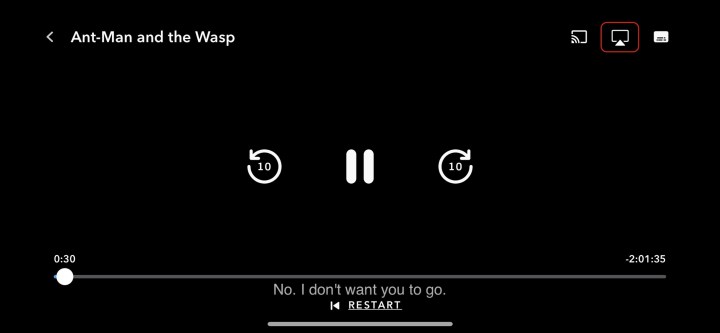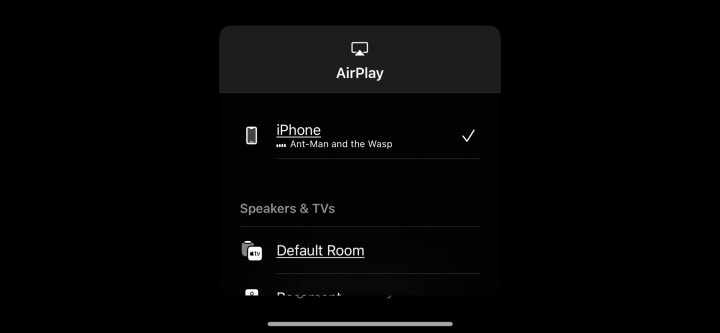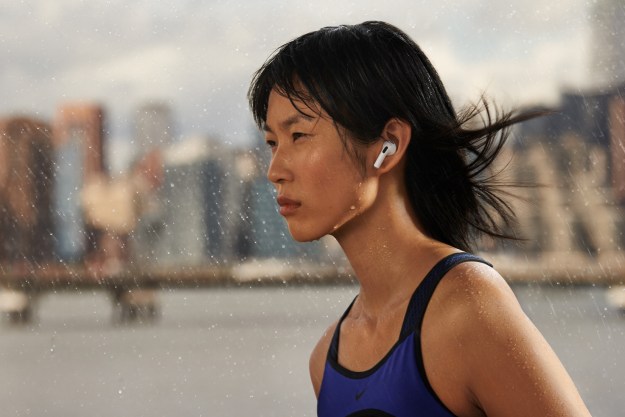When it comes to listening to music wirelessly, most people think of Bluetooth. It’s built into just about every smartphone on the planet, and a huge number of tablets, desktops, and laptops have it too. But if you own Apple hardware, you need to know about a Bluetooth alternative that works over Wi-Fi, called Apple AirPlay 2.
AirPlay 2 is much more than just a simple pairing option: It lets you send both audio and video to a growing variety of devices, such as TVs, speakers, Apple TV boxes, Macs, and home theater receivers, all sans wires. If you own more than one AirPlay 2-compatible audio device, you can stream your music to just one of them, some of them, or all of them without losing synchronization. If that sounds cool, stay with us. We’re going to point out all of the exciting features of AirPlay 2 and show you how to use it.
What is AirPlay anyway?
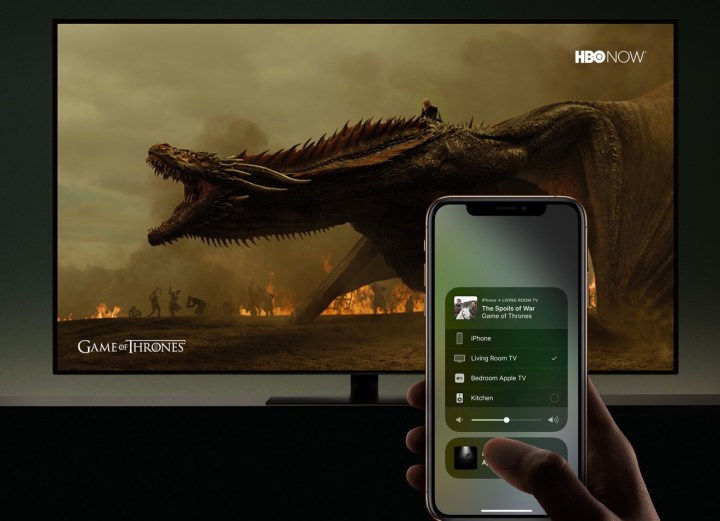
Originally debuted in 2004 as AirTunes, AirPlay is Apple’s proprietary streaming protocol suite designed to allow users to “throw” audio and video signals from one “sender” device to one “receiver” device. Streamed content includes music, video, photos, and screen sharing, all of which retain their metadata when sent via AirPlay.
Back then, sender devices included Windows computers running Apple Music, iOS devices including iPhones, iPods, and iPads, and Mac computers running macOS X Mountain Lion or later (depending upon the processor).
Receiver devices included Apple’s long-discontinued AirPort Express routers, but now include Apple TVs, Apple’s HomePod, HomePod Gen 2, HomePod Mini, Mac computers with Monterey macOS or newer installed, and a wide variety of supported third-party wireless speakers, as well as a number of smart TV platforms.
AirPlay also lets you “mirror” the screen of an iOS/iPadOS/MacOS device to an Apple TV so that you don’t end up with a group of people huddling around a tiny screen just to see a map, photo, video, etc.
What does AirPlay 2 do?

Announced in 2017, AirPlay 2 builds on the original AirPlay feature set and lets you exert more control over AirPlay devices through Apple’s HomeKit platform. With it, you can:
- Stream music to multiple AirPlay 2-compatible speakers simultaneously, creating a true multiroom streaming system. Under the original AirPlay, only one could be used at a time.
- Apple Home compatibility. You can use the Home app to label these AirPlay 2 devices and add them to rooms and scenes, which can then be automated. For fans of Apple’s Siri voice assistant, this is a big deal because Siri can control any devices that HomeKit recognizes. Initially, this only worked with an Apple Music subscription, but Apple has been adding support, including Deezer, Spotify, Pandora, and more.
- If you own two of Apple’s HomePods or HomePod Minis, you can use AirPlay 2 to set them up as a stereo pair.
- As with AirPlay, AirPlay 2 supports lossless, 16-bit/44.1kHz CD-quality audio streams — one of several levels of lossless audio now offered by Apple Music. None of Apple’s wireless headphones are compatible with these formats, however wireless earbuds from other manufacturers are beginning to emerge which do support lossless audio over Bluetooth.
- AirPlay 2 can also be used to control streaming video, and on many more devices than just an Apple TV. Smart TV models from Samsung, LG, Vizio, Toshiba, and Sony are now AirPlay 2-compatible, as are all Roku TVs and select 4K-capable Roku player devices. For some people, this will mean they no longer need an Apple TV device at all — especially as many of these same TVs will be getting Apple’s TV app too.
Other devices that support AirPlay 2 include multiple soundbars, smart thermostats like Ecobee’s, and other smart speakers.
AirPlay 2 is baked into iOS, iPadOS, and macOS, so whether you are using an iPhone, iPad, or computer, you’ll have full control of playback.
Does AirPlay work on all my Apple devices?

AirPlay 2 is baked into iOS, iPadOS, and macOS, so whether you’re using an Apple mobile device or computer, you’ll have full control of audio playback. The same goes for the Apple TV and Apple TV 4K streaming devices. Apple’s tvOS turns your Apple TV into a “sender” device for audio, so if you’re playing a movie on Apple TV, you can turn every AirPlay 2 speaker in your home into an expanded home theater sound system — a handy feature for those without a dedicated soundbar or 5.1 home theater system.
With the macOS Monterey update, Apple has also added the ability to AirPlay directly from another Apple device, like an iPhone or iPad, directly to your Mac. This can be used to show media on a larger screen if you want to share it with an audience, among other purposes. This macOS support is only available on Mac models sold within the last few years but works on MacBooks, iMacs, the Mac Mini, and more.
How is AirPlay 2 different than Bluetooth?

Although AirPlay and Bluetooth both allow audio to be streamed wirelessly, there are several important differences:
- Despite the name, AirPlay and AirPlay 2 will work over any IP network connection, whether wired or wireless (Wi-Fi). The only rule is that all AirPlay devices must be on the same network. Unfortunately, that also means that AirPlay will not work when you’re away from your home or office unless you have a portable travel router that you can use to create a temporary Wi-Fi network.
- Bluetooth can directly connect devices wirelessly without needing a common IP-based network.
- AirPlay is proprietary to Apple. At the moment, the company only allows Apple devices to use AirPlay to stream media. Bluetooth is an open standard. Any company can choose to incorporate Bluetooth streaming into its devices.
- AirPlay can send video as well as audio, while Bluetooth only works with audio.
- But because AirPlay uses Wi-Fi and Ethernet, it has more bandwidth to work with and can thus support higher-quality audio streaming than Bluetooth.
- Bluetooth wireless range is shorter than Wi-Fi and has a harder time penetrating walls and other obstacles.
- You can use a Bluetooth speaker as a speakerphone if it’s got a mic, and some will let you create stereo pairs over Bluetooth. AirPlay doesn’t have the same mic-oriented features.
- Bluetooth is a more universal standard and is used to pair keyboards, mice, and much more. AirPlay is focused on streaming media.
Which devices work with AirPlay 2?

As previously mentioned, the list of AirPlay 2 sender devices is fairly short, comprising mostly iOS devices (they’ll need iOS 11 or later) and Mac computers (macOS 10.13 or later) — it won’t work on any devices made before 2011.
The list of receiver devices, on the other hand, is growing rapidly, and by our count, includes many brands of wireless speakers and AV receivers , plus a growing selection of TV brands (if you don’t count Roku TVs, which are offered by several different manufacturers). AirPlay 2 has been expanding its reach in the streaming world as well, thanks to Roku device support.
Here are just a few of the companies that already support AirPlay 2 on some of their products:
- Amazon Omni and Fire TV
- Bang & Olufsen
- Bluesound
- Bose
- Bowers & Wilkins
- Definitive Technology
- Denon
- Devialet
- Ecobee
- Ikea
- LG
- Libratone
- Marshall
- Marantz
- McIntosh
- Naim
- Pioneer
- Polk Audio
- Roku
- Samsung
- Sonos
- Sony
- Vizio
As you might expect, this is likely just a small fraction of the companies that plan to add Airplay 2 support to their products eventually. Plus, some existing apps and products can be updated to support AirPlay 2, in addition to newly developed apps and products. A recent example comes from Bose, which added AirPlay 2 to its SoundTouch wireless speakers, some of which were years old already.
So, if you have some swanky, Wi-Fi-enabled B&W speakers, don’t sell them just yet!
How to start using AirPlay 2
If you have compatible devices, using AirPlay 2 is very easy, but there are several different ways to do it.
Using AirPlay to screen mirror
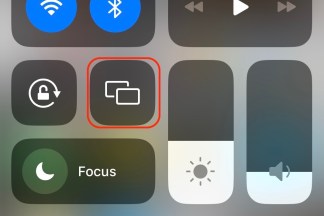
On an iOS/iPad OS device, access the Control Center and select the two interconnected rectangles icon. This will bring up a list of available screen mirroring devices on your network, like an Apple TV or a compatible Mac. Select the one you want.
Using AirPlay to stream video
Inside an AirPlay-compatible app on an iOS/iPad OS device, begin to play a video. Tapping the screen once should reveal a set of icons in the top-right corner. Look for the rectangle with a triangle pointing into the bottom and select it. It should bring up a list of available video AirPlay devices on your network, like an Apple TV or a compatible Mac. Select the one you want.
Using AirPlay to stream audio

There are two ways to AirPlay Audio on an iOS/iPad OS device. If your app supports AirPlay, on the Now Playing screen, you may see a triangle with a radiating series of concentric rings. Selecting that icon will bring up a list of available AirPlay audio devices on your network, like a wireless speaker or an AirPlay-compatible AV receiver. Select the one you want.
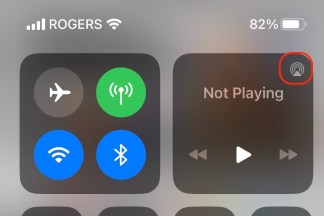
If your app does not support direct AirPlay streaming, you can create an AirPlay connection to a compatible speaker using the Control Center. Look for a media control panel that has the same triangle with radiating concentric rings icon, and select it. That will bring up a list of available AirPlay audio devices on your network, like a wireless speaker or an AirPlay-compatible AV receiver. Select the one you want.
On a Mac, AirPlay audio options are found in the Sound menu. This is often available from the Mac’s top menu bar, but if the icon isn’t there, you can access it from the System Preferences app. Select the AirPlay device you want from the list.
AirPlay 2 compatibility issues
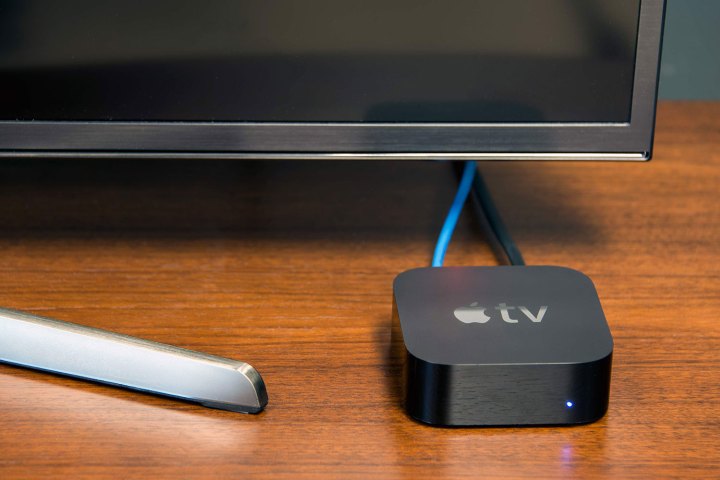
AirPlay 2 compatibility can vary, and some devices may age out of AirPlay compatibility, especially when it comes to new features. This is least likely with Apple’s own devices, but issues can still crop up. For example, when iOS 16 was released, updated iPhones lost AirPlay 2 compatibility with some of the oldest Apple TVs from 2010 and 2012. It’s still uncertain if this is intentional or not, but if you’re working with devices that are a decade old or more, know that you may run into some operational issues.
Editors' Recommendations
- Apple has upgraded the AirPods Pro with lossless audio, sort of
- The best AirPods and AirPods Pro 2 accessories for 2022
- Apple AirPods Pro 2 vs. Google Pixel Buds Pro
- How to pre-order the new Apple AirPods Pro 2
- Apple’s new AirPods Pro 2 use your iPhone camera to examine your ears


